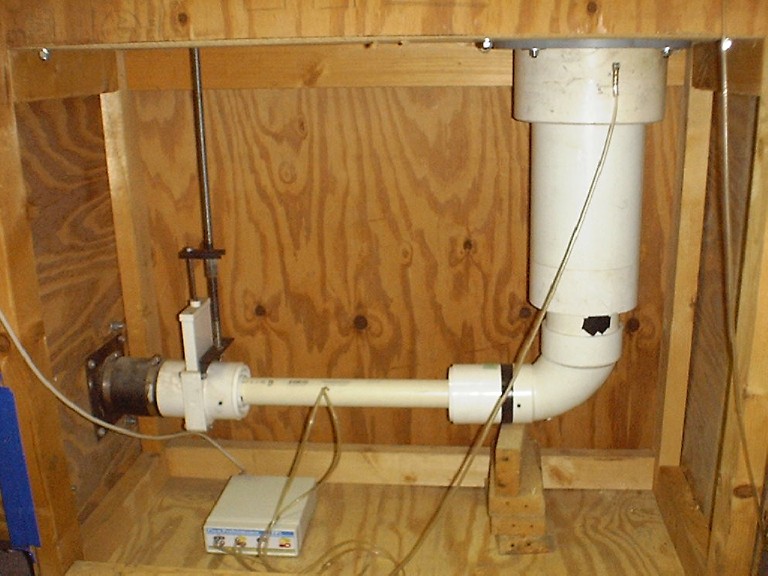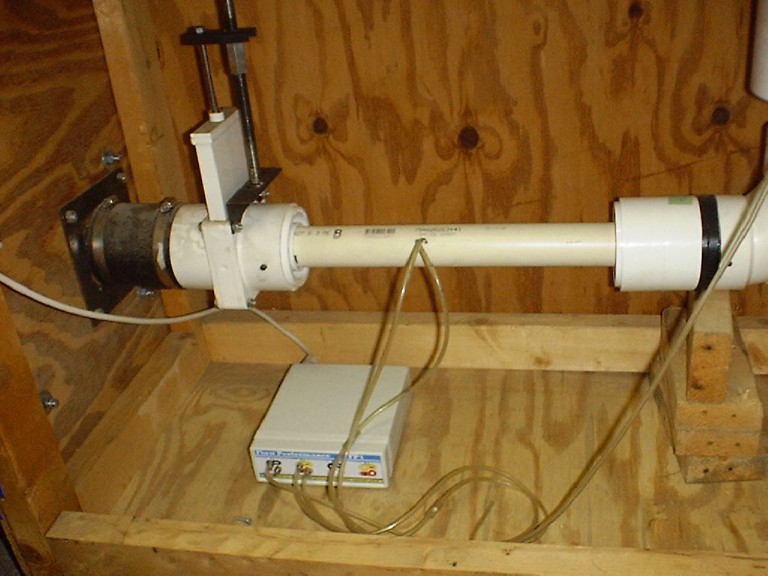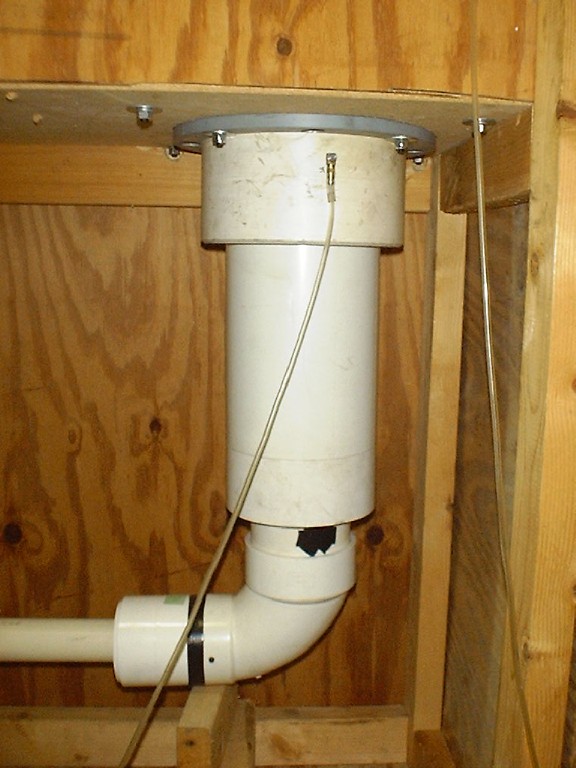Well, pitot on it, a pitot bench it will be.
42 posts
• Page 2 of 3 • 1, 2, 3
Update;
Oh yeah, if you see any problems or mistakes I'm sure I already have an excuse. :p
Oh yeah, if you see any problems or mistakes I'm sure I already have an excuse. :p
Jesse Lackman
- Jesse Lackman
- Posts: 106
- Joined: Thu Mar 17, 2005 9:31 pm
- Location: ND
Thanks, Larry.
I got chewed out by an engineer friend yesterday when I told him I was modifying my bench for a pitot flow element, "WHY would you use a PITOT!?!?"
He is an orifice man, but would settle for a venturi flow element.
So I mentioned most flow bench orifices get mounted on a flat surface and are used "open", ie not in a pipe.
Then it was, "WHY would ANYONE use an ORIFICE in the open and not in a PIPE!?!?"
(I had been wondering about that myself, and had already decided if I were to use an orifice it would be in a pipe.)
There was so much orifice flow engineering talk, I think I blacked out there for a moment when I heard him start to speak in tongues, something about a "reynolds number". I didn't dare ask if that was related to the diameter of the orifice which is something I COULD maybe understand, you know both of them being a number and all.
Anyway, I was already modifying my bench in such a way the flow element will be outside the bench and thus could be changed after the bench is built. I thought I could use whatever I wanted, a pitot section, an orifice in a pipe flow section, or a venturi section. A changable orifice in a pipe would be easy, but in researching flow elements again the pitot still stands above the others for accuracy and repeatability at a reasonable cost. You can purchase pitots with .75% accuracy and .1% repeatability, some are .5% accurate. Venturi flow elements are about that good. The trouble with both the pitot and venturi is flow reversal through the flow element. I think I have that figured out for the pitot. Venturi is out of the question IMO. An orifice plate would be easily reversable and interchangable in a pipe flange that is easily accessable from the front of the bench where the inclined manometer would normally go.
Wheels still turning.
Will there be a train wreck?
Stay tuned.
I got chewed out by an engineer friend yesterday when I told him I was modifying my bench for a pitot flow element, "WHY would you use a PITOT!?!?"
He is an orifice man, but would settle for a venturi flow element.
So I mentioned most flow bench orifices get mounted on a flat surface and are used "open", ie not in a pipe.
Then it was, "WHY would ANYONE use an ORIFICE in the open and not in a PIPE!?!?"
(I had been wondering about that myself, and had already decided if I were to use an orifice it would be in a pipe.)
There was so much orifice flow engineering talk, I think I blacked out there for a moment when I heard him start to speak in tongues, something about a "reynolds number". I didn't dare ask if that was related to the diameter of the orifice which is something I COULD maybe understand, you know both of them being a number and all.
Anyway, I was already modifying my bench in such a way the flow element will be outside the bench and thus could be changed after the bench is built. I thought I could use whatever I wanted, a pitot section, an orifice in a pipe flow section, or a venturi section. A changable orifice in a pipe would be easy, but in researching flow elements again the pitot still stands above the others for accuracy and repeatability at a reasonable cost. You can purchase pitots with .75% accuracy and .1% repeatability, some are .5% accurate. Venturi flow elements are about that good. The trouble with both the pitot and venturi is flow reversal through the flow element. I think I have that figured out for the pitot. Venturi is out of the question IMO. An orifice plate would be easily reversable and interchangable in a pipe flange that is easily accessable from the front of the bench where the inclined manometer would normally go.
Wheels still turning.
Will there be a train wreck?
Stay tuned.
Jesse Lackman
- Jesse Lackman
- Posts: 106
- Joined: Thu Mar 17, 2005 9:31 pm
- Location: ND
Jesse
The catch to a project like this is a bit like Microsoft's user interface. There's more than one way to achieve the same results.
What matters far more than the type of bench you ultimately decide you are building, is all the knowledge you obtain while building it.
Here's a scenario that would churn up a debate. Picture every member of this forum somehow getting all there flowbenches togeter in a climate controlled room. Everyone is given the same 3 test plates to flow. I wonder what the results of the test would yield...
Larry
The catch to a project like this is a bit like Microsoft's user interface. There's more than one way to achieve the same results.
What matters far more than the type of bench you ultimately decide you are building, is all the knowledge you obtain while building it.
Here's a scenario that would churn up a debate. Picture every member of this forum somehow getting all there flowbenches togeter in a climate controlled room. Everyone is given the same 3 test plates to flow. I wonder what the results of the test would yield...
Larry
- larrycavan
- Site Admin
- Posts: 1183
- Joined: Fri Apr 01, 2005 4:40 pm
Repeatabilty is what you are after along with a level of accuracy you are comfortable with.
My bench is as simple as some 6", 4", 3" and 1.5" PVC pipe, my averaging pitot tubes (simple brass tubing) a gate valve and an FP1. My simple bench will flow the same time after time with corrections for temp/baro. I can let my bench sit for an hour or a week and it still flows the same numbers. The key to this is the digital manometer it takes so many variables out of the equation.
I just machined up a sharp edge orifice the other nite that was calculated to flow 200cfm's @ 28", on my bench it flowed 199.8 cfm's. That difference could be a difference of my hole dia of .001", I try to hold my orifice plates to +/-.001". Can't get much simplier in my book?
My bench is as simple as some 6", 4", 3" and 1.5" PVC pipe, my averaging pitot tubes (simple brass tubing) a gate valve and an FP1. My simple bench will flow the same time after time with corrections for temp/baro. I can let my bench sit for an hour or a week and it still flows the same numbers. The key to this is the digital manometer it takes so many variables out of the equation.
I just machined up a sharp edge orifice the other nite that was calculated to flow 200cfm's @ 28", on my bench it flowed 199.8 cfm's. That difference could be a difference of my hole dia of .001", I try to hold my orifice plates to +/-.001". Can't get much simplier in my book?
"There is no more formidable adversary than one who perceives he has nothing to lose." - Gen. George S. Patton
- bruce
- Site Admin
- Posts: 1638
- Joined: Sun May 09, 2004 12:17 pm
I check my Flow Performance micro bench setup with one of Bruce's aluminum calibration orifices. I almost never have to adjust the calibration, and if I do, it is only a click one way or the other and I'm good. There isn't much that can go wrong with an FP micro bench, but I always check anyway.
John
John
- Mouse
- Posts: 308
- Joined: Wed Jan 21, 2004 8:45 pm
Bruce,What was the dimension and thickness of the test orfice that flowed 199.8 in your last post.I would like to make one and test flow my bench,also what formula did you use to calculate that orfice to measure 200 cfm. Was it a sharp edge orfice?
Thanks Dean
Thanks Dean
- wing64k
- Posts: 46
- Joined: Sun Oct 23, 2005 9:07 pm
- Location: langhorne,Pa
I used the standard orifice flow formula which can be found on the forum. Sharp edge orifice, .62 Cd, .125" thick but plate thickness should not effect flow on a true sharp edge (not a 90* edge). My orifice plates are machined with a back cut angle to acheive a true sharp edge. (that is shave the surface of your fingernail off sharp)
"There is no more formidable adversary than one who perceives he has nothing to lose." - Gen. George S. Patton
- bruce
- Site Admin
- Posts: 1638
- Joined: Sun May 09, 2004 12:17 pm
Update.
The bench is 7" deeper, I eliminated the side doors now that I will have a removable back.
I suppose Nick is gonna tell me those side doors were for something other than access.
The bench is 7" deeper, I eliminated the side doors now that I will have a removable back.
I suppose Nick is gonna tell me those side doors were for something other than access.
Jesse Lackman
- Jesse Lackman
- Posts: 106
- Joined: Thu Mar 17, 2005 9:31 pm
- Location: ND
Update.
The test pressure will be taken in the test fixture feed box located in the valve chamber right under the bench top. I'm ready to screw and glue it into place. I think I'm going to be putting a MDF lid on the test fixture feed box so the bench top can be fastened more securely to the top of the test fixture feed box. I might be using RTV on this lid so it can be taken off.
Here is a picture of the piping layout. I wouldn't mind comments, if any of you can think of any potential problems let me know.
Thanks.

The test pressure will be taken in the test fixture feed box located in the valve chamber right under the bench top. I'm ready to screw and glue it into place. I think I'm going to be putting a MDF lid on the test fixture feed box so the bench top can be fastened more securely to the top of the test fixture feed box. I might be using RTV on this lid so it can be taken off.
Here is a picture of the piping layout. I wouldn't mind comments, if any of you can think of any potential problems let me know.
Thanks.

Jesse Lackman
- Jesse Lackman
- Posts: 106
- Joined: Thu Mar 17, 2005 9:31 pm
- Location: ND
I'm wondering if 4" pipe from the bottom of the pitot section to the test fixture feed box will be big enough. It would be tough to impossible to use 6" for that section of piping.
Jesse Lackman
- Jesse Lackman
- Posts: 106
- Joined: Thu Mar 17, 2005 9:31 pm
- Location: ND
edit:
Let me add this disclaimer that I am not posting these pics to say this is the only way to do a pitot bench, just showing what I have come up with over my years of testing and building in my quest for a flowbench design.
Here are some pics of the internals of my current flowbench, This bench has been used for various design ideas and changes over the years. Should give you a very good idea of how simple a pitot style flowbench can be made. This bench is extremely accurate and repeatable.

This pic shows my 1-1/2" flowtube using my averaging pitot tube and static pickup. This tube can be changed out for other size tubes.

Here is a pic of the setteling chamber which is a 6" dia pipe which necks down to a 4" pipe and then to a 4" to 3" 90* elbow reducer, the next part is my flow straightener section which is a tube with soda straws in it. This is then reduced down to my final flowtube size.

It all doesn't look real "pretty" but it works quite well
Edited By bruce on 1136849363
Let me add this disclaimer that I am not posting these pics to say this is the only way to do a pitot bench, just showing what I have come up with over my years of testing and building in my quest for a flowbench design.
Here are some pics of the internals of my current flowbench, This bench has been used for various design ideas and changes over the years. Should give you a very good idea of how simple a pitot style flowbench can be made. This bench is extremely accurate and repeatable.
This pic shows my 1-1/2" flowtube using my averaging pitot tube and static pickup. This tube can be changed out for other size tubes.
Here is a pic of the setteling chamber which is a 6" dia pipe which necks down to a 4" pipe and then to a 4" to 3" 90* elbow reducer, the next part is my flow straightener section which is a tube with soda straws in it. This is then reduced down to my final flowtube size.
It all doesn't look real "pretty" but it works quite well
Edited By bruce on 1136849363
"There is no more formidable adversary than one who perceives he has nothing to lose." - Gen. George S. Patton
- bruce
- Site Admin
- Posts: 1638
- Joined: Sun May 09, 2004 12:17 pm
What is the flow range of your bench Bruce?
Since I have ten 5923 motors and won't be wasting any test pressure on an orifice this bench ought to have a decent amount of flow. That is why I'm thinking a 2 1/2" pitot section will not be enough. And I hope a 3" pitot section will still be accurate at around 200 cfm. And then I wonder if 4" is big enough for the U pipe section between the bottom of the pitot section and the test fixture feed box.
I think 4" will be big enough, but what do I know?
The whole idea is that this bench should have some resale value so if I croak my wife can sell it for big money.
Hmmm, could that be the reason she is pushing me to get it done??
Since I have ten 5923 motors and won't be wasting any test pressure on an orifice this bench ought to have a decent amount of flow. That is why I'm thinking a 2 1/2" pitot section will not be enough. And I hope a 3" pitot section will still be accurate at around 200 cfm. And then I wonder if 4" is big enough for the U pipe section between the bottom of the pitot section and the test fixture feed box.
I think 4" will be big enough, but what do I know?
The whole idea is that this bench should have some resale value so if I croak my wife can sell it for big money.
Hmmm, could that be the reason she is pushing me to get it done??
Jesse Lackman
- Jesse Lackman
- Posts: 106
- Joined: Thu Mar 17, 2005 9:31 pm
- Location: ND
42 posts
• Page 2 of 3 • 1, 2, 3
Return to Pitot Style Bench discussion
Who is online
Users browsing this forum: No registered users and 0 guests
